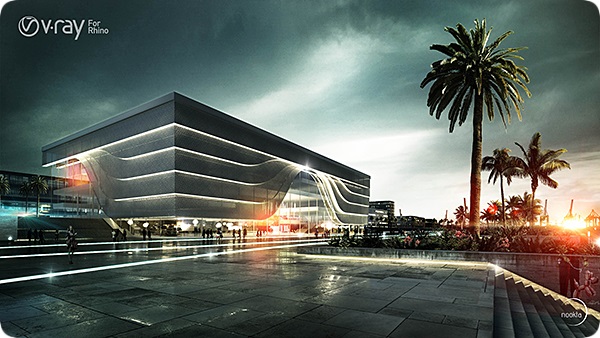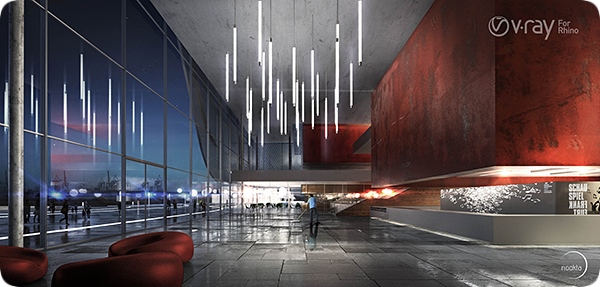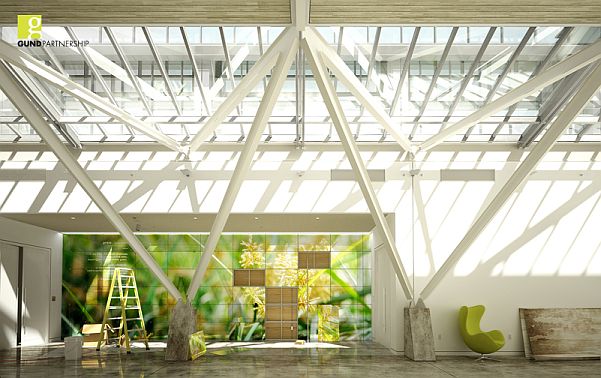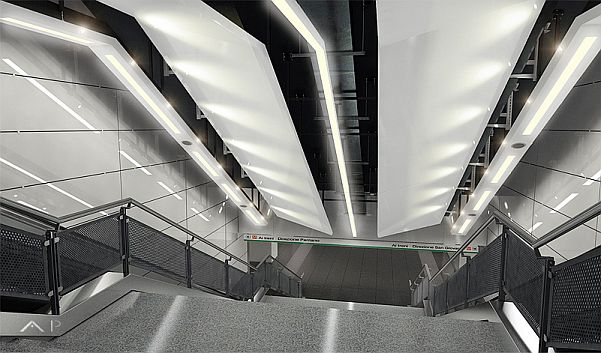With V-Ray & VisualARQ, appearances are never deceptive
by Francesc Salla | Dec 9, 2014 | Articles

With V-Ray and the new VisualARQ 1.8, you can add textures to your models. Image: Chaos Group
We are who we are… and what we look like. This principle applies to many things, from people to food… to architecture!
Thanks to 3D software.
In VisualARQ blog we won’t judge people “appearance”, nor your gourmet experience. We are going to talk about how to present an architectural project with the best “appearance”, how to get your work look in the best way possible, with the finest textures, lights and volumes, with bright colors, sharp lines and great image quality.
A plan, elevation or profile view can be very accurate and include all the necessary parameters, but they won’t transmit the potential of the design you’ve imagined.
VisualARQ helps you with 2D and 3D parametric objects and NURBS modeling. However, if you also want the “appearance” of your project to seduce with the maximum realism, try to dress it up with
V–Ray for Rhino.
The image quality that you get is excellent and truthful. The technology used in the development of this plug-in is very advanced and contains complex algorithms and various mapping systems.

V-Ray gets excellent renderings optimizing the computer resources. Image: Chaos Group
V-Ray is a highly valued software in many environments – not only in architecture. It is used in all kinds of product design and engineering projects. You’ve probably seen some stunning images of 3D animations made with variations of this software in computer games and movies. Your architectural creations don’t deserve less. A blockbuster result. It will be like
taking your project to Hollywood.
V-Ray works even better on Rhino 5, since it adds a toolbar to it.
With the new 1.8 VisualARQ version, you can apply “texture mappings” to your 3D architectural works and the result will surprise you.

VisualARQ and V-Ray complement each other in architectural projects. Image: Via Chaos Group
The plug-in exploits the potential of CPU and GPU graphics processors and offers many interesting features, some of which are
enhancements included in the 2.0 version for Rhino:
- V-Ray RT®: Interactive rendering in real time, with a tracing up to 30 times faster.
- V-Ray Material Wrapper: Specification of additional material properties.
- V-Ray Express: For an additional fee, you have 200 materials and faster lighting setups.
- HDR Light Studio Support: Light Paint function allows you to directly access HDR Light Studio.
- V-Ray Material: A new compact material in which you can adjust reflection, refraction and diffusion.
- Dome Light: Optimizes the light coming from a higher source with precise location indications.
- V-Ray Proxy: Manages the scene memory and renders large quantities of geometry saving a great amount of RAM resources.
- Lens Effects (Glare / Bloom): Emulates the lenticular effects that occur when photographing bright highlights.
- Dispersion: Locates and refracts light depending on its wavelength.
- Ambient Occlusion: Shading based on the proximity of an object and improvement of the details in a short time.
The software benefits do not end here, there are many other
features that you can check in the developer website,
Chaos Software. You will also find some video demos of its performance, and you can download an evaluation version.

VisualARQ and V-Ray complement each other in architectural projects. Image: Via Chaos Group
If you give it a try, you will discover that your architectural projects done with
VisualARQ combined with V-Ray will be irresistible. They will look so real that you will wonder if they have already been built and if you have already been paid all the fees. Who could still believe that appearances are deceptive?
(Article by M.A. Núñez)




